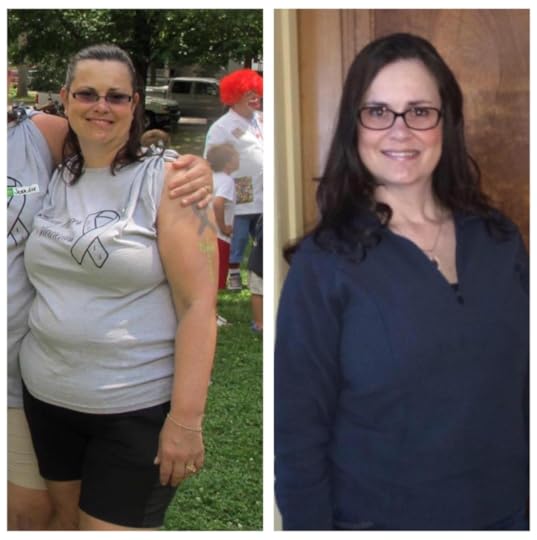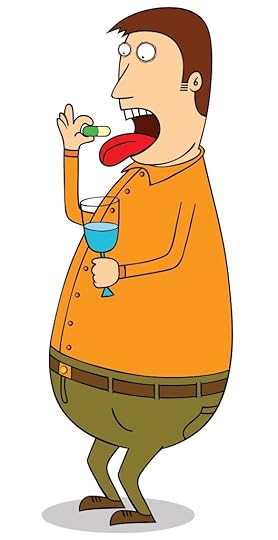William Davis's Blog: Dr. Davis Infinite Health Blog, page 145
February 21, 2015
Who needs Viagra?
 Yes, erectile dysfunction can reverse with the Wheat Belly lifestyle. But why and how?
Yes, erectile dysfunction can reverse with the Wheat Belly lifestyle. But why and how?
Erectile dysfunction, ED, and thereby erections, are fairly complicated phenomena. But the capacity to mount an erection parallels arterial health elsewhere in the body, particularly in the heart, since penile erections are a blood flow regulation phenomenon. In my cardiology practice, for instance, it was virtually the rule to see ED coupled with coronary disease, since coronary disease is essentially an expression of poor arterial function and health, also. If you have coronary disease, you likely have ED; if you have ED, you likely have coronary disease or at least prominent risk factors for coronary disease, especially hypertension. This is true whether you are 30 years old, 50, or 70.
It means that many of the lifestyle changes that benefit cardiovascular risk also improved erectile function. If we remove wheat, grains, and sugars to reduce expression of small, oxidation-prone LDL particles that cause coronary disease, it also benefits erectile function. If we supplement omega-3 fatty acids from fish oil (and fish oil ONLY, not krill oil or other sources!), it improves arterial health and flexibility and likewise erectile capacity. If we restore vitamin D blood levels to the truly healthy range, such as 60 ng/ml, arterial health is dramatically bolstered in the heart and in the penile circulation.
The dramatic reduction in abdominal visceral fat that develops with the Wheat Belly lifestyle also removes the sources of excessive aromatase enzyme activity. Visceral fat aromatase takes testosterone and converts it to estrogen, resulting in low testosterone and high estrogen, both of which impair erectile capacity (and adds to the man breasts effect, made worse by the prolactin stimulation of the A5 pentapeptide that derives from partial digestion of the wheat gliadin protein). Visceral fat also emits inflammatory proteins that block the effects of testosterone and other hormones in various organs, a form of endocrine disruption. Remove grains and sugars, visceral fat shrinks (especially when coupled with increased dietary fat intake), aromatase levels drop, testosterone increases and is better able to exert its effects, estrogen levels drop, erections are improved.
I’ve seen it time and again: introduce changes meant to reduce cardiovascular risk and improve arterial health, and erectile capacity returns over time.
If you or your partner are struggling with ED but do not want to suffer the 1) ridiculous expense of ED drugs, 2) get exposed to the risks, such as blindness (which I believe to be worse than advertised), then here is a menu of healthy changes to consider, all consistent with the Wheat Belly lifestyle:
Eat NO grains and no added sugars
Lose visceral fat–reflected as a shrinking waistline over time
Supplement omega-3 fatty acids from fish oil–ideal dose is 3000-3600 mg per day of EPA and DHA (not fish oil, but of the EPA + DHA content of fish oil), divided in two
Supplement vitamin D3 (cholecalciferol)–at a dose sufficient to achieve a blood 25-hydroxy vitamin D level of 60-70 ng/ml, typically 4000-8000 units per day, only as gelcap, never as tablet (tablets are poorly absorbed or not absorbed at all).
Unlike acid reflux or irritable bowel syndrome bowel urgency, both of which can disappear within the first week of starting the Wheat Belly lifestyle, recovery from the arterial dysfunction of ED can require weeks to months, especially if substantial visceral fat is present at the start.
There are a few other strategies that are worth considering, as well, before you resort to the expense and hazard of ED drugs and that can allow a natural recovery of erective function. These include supplementing magnesium, e.g., magnesium malate, 1200 mg twice per day (180 mg elemental magnesium twice per day), an arterial relaxant (erections involve both vascular constriction and relaxation). In the rush to regain erectile function, an upfront period of l-arginine and ornithine supplementation can help (though I am skeptical that they are useful in the long-term as other strategies, such as vitamin D, make them superfluous); l-arginine 3000 mg twice per day, ornithine 1500 mg twice per day, both on an empty stomach, can sometimes provide dramatic restoration. Lastly, add some strength training to your physical activity/exercise regimen, as testosterone levels will increase modestly with muscle growth. You don’t have to be a gym rat nor build 18-inch biceps, but just restoring more youthful levels of muscle lost as you age can add a bit of advantage.
As in so many other health conditions, your doctor will prescribe Viagra, Cialis, Levitra, even testosterone, without making any mention of the inexpensive, natural, and effective means of regaining erectile capacity without drugs. Quick with the prescription pad, slow or ignorant of any understanding of the power of nutrition, your doctor is likely not a helpful resource in this issue. But that means that you are in charge of your erectile health.
The post Who needs Viagra? appeared first on Dr. William Davis.
February 20, 2015
Carolyn’s stunning Wheat Belly transformation
Carolyn shared her 6-month “before” and “after” photos, a stunning change! At 68, it looks to me that she has turned the clock back considerably.
Unlike diets that achieve nothing more than lose weight, this lifestyle restores health. This is why we are not witnessing the usual saggy skin, circles under the eyes, and fatigue typical of calorie- or point-counting, or low-fat diets–if they even work.
With the Wheat Belly lifestyle, you see people become vibrant, glowing with health, beautiful and, yes, slender.




The post Carolyn’s stunning Wheat Belly transformation appeared first on Dr. William Davis.
Can you reverse rheumatoid arthritis with a diet? Absolutely!
Carol shared her photos and story of her Wheat Belly success in both losing weight and in reversing rheumatoid arthritis:
“I was doing a semi gluten-free diet. I became serious and started Wheat Belly on 12/20/2014. I lost 12 pounds in 4 weeks. I feel so much better.
“I was diagnosed with rheumatoid arthritis and I have seen a tremendous difference in the inflammation and pain.
“The picture on the left was taken on 6/29/2014 and the picture on the right was taken on 1/31/2015. ”
”
Carol is thinner, yes, but has also reversed the autoimmune damage to joints. This happens because she has removed the initial trigger for autoimmunity, the gliadin protein of wheat. She has also removed the abnormally increased intestinal permeability permitted by the gliadin that allows bacterial components such as lipopolysaccharide to enter the bloodstream and trigger inflammation. She has also removed the exceptionally inflammatory protein, wheat germ agglutinin. It all adds up to dramatic reversal of autoimmune inflammation.
Now, to take the program all the way and stack the odds in favor of experiencing no recurrences, take the extra steps outlined here and in Wheat Belly Total Health!
The post Can you reverse rheumatoid arthritis with a diet? Absolutely! appeared first on Dr. William Davis.
February 19, 2015
Taco Seasoning Mix

The simplest things containing some wheat or grain component can set off a barrage of re-exposure symptoms in those of us who have been wheat- and grain-free. A bit of wheat flour or cornmeal can, for example, result in a day’s worth of bloating and diarrhea, joint pain for days or weeks, and appetite stimulation for several days. If you have or had an autoimmune or neurological condition that receded with wheat/grain elimination, the symptoms of your condition can return and persist for weeks to months. For these reasons, once wheat- and grain-free, your best policy is to stay wheat- and grain-free.
Much of the Wheat Belly message therefore focuses on how to go about staying clear of such dietary poisons, products of the seeds of grasses that never should have had a role in the human diet in the first place.
So here is a recipe for a simple Taco Seasoning taken from the Wheat Belly 30-Minute Cookbook. It is embarrassingly simple but can serve you well if you are trying to make a spicy Mexican dish and do not want to chance a pre-mixed package off supermarket shelves. Thankfully, nearly all single spices are just that: single spices, and don’t have fillers or other adulterants, so you can create your own spice/seasoning mixes with them.
Taco Seasoning Mix
Makes 1/2 cup
3 tablespoons chili powder
1 1/2 tablespoons onion powder
2 teaspoons paprika
2 teaspoons garlic powder
1 1/2 teaspoons ground red pepper
1 1/2 teaspoons ground cumin
1 teaspoon dried oregano
In small bowl, combine the chili powder, onion powder, paprika, garlic powder, red pepper, cumin, and oregano. Store in an airtight container.
The post Taco Seasoning Mix appeared first on Dr. William Davis.
February 18, 2015
Amy’s Wheat Belly life transformation
Amy shared her amazing Wheat Belly experience with me. I believe that, like me, you will be astounded as how much misery she endured before she found this simple, inexpensive, powerful solution to health.

Dear Dr. Davis,
Thank you for saving my life. I mean this in a literal sense, truly – I thank you.
My name is Amy. I am a culinary artist (chef) and own a restaurant, A. Renee, in Bloomington, IL.
My story is very complex so I’ll share the most condensed version I can. I lead a hectic lifestyle, as do most. Owning a demanding business in a field with the highest failure rate while raising two children on my own may have been the trigger to being near death four months ago.
I developed IBS [irritable bowel syndrome], which then led to gluten intolerance. I replaced all gluten with products that were either rice or corn dominant, not realizing what I was truly doing was poisoning myself.
I walked around in pain all of the time and developed a tolerance to the agony, except when severe anxiety would take hold and drive me into panic attack mode. I had access to Xanax and other forms of anti-anxiety meds., yet my system is exceptionally sensitive and the exposure to pharmas only seemed to exacerbate the problem(s). The only thing that stopped the snowball would be a drink or two, which tended to be corn based vodka.
This past July I fell and injured both of my knees. The inflammation that occurred triggered the ultimate reaction in my ‘second brain.’ My liver, pancreas, and gall bladder became severely inflamed — I was told if it had been a few days later, I may not be here.
GI scopes showed 9 ulcers and I was given a diagnosis of ulcerative colitis, as well as told I needed to go into treatment for alcoholism because my liver proteins were high. What!? I couldn’t believe what I was hearing and could barely make sense of it for ‘they’ already had me tanked up on meds and were offering me poison for food options in the hospital that were making me even more ill (e.g. one of the options under clear broth was PEPSI–I’m serious. I asked the nutritionist that was sent up to educate me how she felt about that and if she brought a can of gas and a match for me while she was at it? She didn’t even know it was on there!
So, in the hospital for seven days without any withdrawal symptoms, nor medical assistance for them. Blood pressure seriously low most of the time and zero communication. I was simply a number.
Got out of the hospital after almost being given someone else’s medication more than once, and told to take Advil for pain (with ULCERS!!) to go into a state of utter fear never before experienced, as I knew the real problem wasn’t being addressed.
In and out of doctors’ offices, medications switched, drove me to panic attacks I had never imagined could be so intense and last the entire day. They put me on Zoloft. This is when I danced with the devil. Evil was all around me.
Finally, I had reached the rock bottom, hell. After a 6-hour stint in the ER being interviewed by a crisis team, as I as practically begging to be put in the mental ward by this time, I was so hopeless and helpless. This is where you come in.
I decided right then and there that, if I didn’t take the reins, I was going to die and become another statistic. I went to my best friend’s house to try and be calm. She put on an Oprah segment she thought I needed to see on DVR, explaining that I just fast-forward through the commercials. I did–except for this one that stuck. It was your commercial for the new book that was recently released. I felt the divine intervention happening right then and there. I KNEW without even reading it yet that I was severely allergic to corn and rice as well as other grains. I went out promptly the next day and bought it.
From that day forward, I have become a completely different person. If you talked to my mom who was there with me the entire time, she will tell you that I did a complete 180 in 24 hours. I did go through detox, shaking out all of the pharmas and poisons I had been consuming called ‘food.’
Every day I woke I felt better and by day four I had energy I don’t believe I’ve had in my entire life. I have incorporated your information into the way I cook and my lifestyle as a whole. Four months ago, I could barely walk up a flight of stairs; today I squat 150 lbs, plank over 4 minutes, and am doing military push ups like a person half my age (I’m 39, 132 lbs, 5’2″). I haven’t had one irregular bowel movement and my anxiety is GONE! Completely GONE!
I have been a walking/talking campaign for your book. When I went in to see my PC at a one month follow up he looked at me and said, “WHAT have you been doing–you look amazing?!” I prescribed your book to HIM by the time I left.
Awareness is my calling as it is yours. I am now also developing a wellness program. I have five people piloting for me right now and one in particular has lost 16 lbs in five weeks of following my approach and recipes. They are ALL feeling better, looking better, and excited to take hold of their lives. I also incorporate supplements/phytotherapy/morning tonic recipe into my plan as I worked on fixing my deficiencies and correcting the leaky gut/candida overgrowth with these natural remedies.
I just want to thank you from the bottom of my heart for sharing your wisdom and caring to help others. The information has pushed me through the metamorphosis necessary to climb to incredible places and share the truth with others about how good they CAN feel by flushing poison fueled by dirty money. Sometimes I guess you have to go to that place to get to this one and I’ll be eternally grateful to you sir. God bless.
Amy
Oddly, Amy apparently stumbled on the Wheat Belly message by viewing a “commercial,” though we have never aired (nor needed to) air any commercials on TV for the Wheat Belly books. So it makes me wonder what divine intervention brought the message to her!
Regardless, stories like Amy’s remind us that the Wheat Belly lifestyle is not just a low-carb diet, not just a program for weight loss, not just a clever boook title; it is, without need for exaggeration, a means of transforming lives and health.
The post Amy’s Wheat Belly life transformation appeared first on Dr. William Davis.
February 17, 2015
Why do people look YOUNGER on the Wheat Belly lifestyle?

We see this over and over again in the photos people provide on the Wheat Belly Facebook page: people look younger. It’s not uncommon for people to look like they’ve shed 10 or 20 years, such as the beautiful couple, Debi and Wayne, seen in the photos above.
But why does this happen?
As with many aspects of youth preservation or anti-aging, we suffer from lack of hard science. Given what we know about the health consequences of wheat and grains, however, along with the phenomena that recede with their removal, I can speculate on why people seem to look so much younger with this lifestyle. Among the likely factors are:
Loss of facial edema–Yes, people are thinner, but you will also note that many people lose the swollen, bloated fluid retention when they say goodbye to wheat and grains, an effect that develops within the first few days.
Loss of facial redness–Red cheeks and facial seborrhea also recede rapidly, generally during the first week. Obviously, “selfies” suffer from imperfect lighting, but I believe that you can make out this effect in Debi’s face. (Wayne’s glasses and facial hair make it tough to make out on his face.)
Loss of puffy eyes–The aging effect of puffy, swollen eyelids are commonly lost rapidly, also.
Sharper facial contours–Consequent to both loss of facial edema and weight lost, the cheeks and jawline appear sharper.
Thicker hair–Though not seen in this couple and not the most consistent effect, some people grow thicker hair or have empty spots fill in, particularly if they have alopecia areata, an autoimmune form of hair loss.
People also report feeling 10 or 20 years younger, or even the best they’ve felt in their adult lives, so it is not just a matter of external appearance. Internal physiological health improves substantially, restoring vigor and energy of younger years. People feel less stiff, have less painful joints and muscle, less gastrointestinal distress, and gain flexibility. I have also frequently witnessed better maintenance of muscle mass, even with weight loss. Typically, about 1/3 of weight lost is in the form of muscle. This equation seems to be different when weight is lost with wheat- and grain-elimination with less marked muscle loss. Having more muscle is a marker of youth. (I wonder if this is another reason why facial appearance is changed without producing the look of emaciation that, for example, low-fat dieting or calorie counting can cause.)
You can also take the anti-aging, youth-preserving benefits of this lifestyle even further with some additional strategies:
Vitamin D–Among the most powerful strategies of all, even having been shown to slow the shortening of telomeres (a chromosomal time-counting mechanism), presumably slowing the aging process.
Limiting other carbohydrates and sugars–Thereby reducing glycation, or blood glucose-modification of proteins–an irreversible process. This means that the proteins in the lenses of your eyes will not opacify and cause cataracts as easily. It means that cartilage proteins will not glycate as quickly that would have otherwise led to brittle cartilage and arthritis. It means that proteins in the body’s arteries won’t glycate, causing stiffness and hypertension.
Cultivate healthy bowel flora–Though we start with a high-potency probiotic, we cultivate and nourish healthy species with prebiotic fibers/resistant starches, as discussed in this Wheat Belly Blog post and in Wheat Belly Total Health. This reduces body-wide inflammation, improves gastrointestinal health, adds to correction of metabolic distortions such as reducing insulin, triglycerides, and blood pressure, and deepens sleep–very youth-preserving.
Perhaps there’s more that I have not identified. But know that, regardless of why you undertook this Wheat Belly wheat/grain-free lifestyle, one of the nice side-benefits is looking and feeling younger than you are.
The post Why do people look YOUNGER on the Wheat Belly lifestyle? appeared first on Dr. William Davis.
February 15, 2015
Drugs that block weight loss

Following the Wheat Belly lifestyle of wheat and grain elimination results in weight loss in the majority of people in short order.
But there are exceptions. The exceptions should not be interpreted to mean that this lifestyle does not work; it should initiate a search for why the weight loss effect of wheat and grain elimination is being blocked. Iodine deficiency, for example, is a common cause for failed weight loss, no matter how perfect your diet and how much you exercise.
Another common cause for failed weight loss are prescription drugs and a few over-the-counter drugs. Among the common drugs that will block your ability to lose weight, even allowing weight gain, are:
Beta blockers—metoprolol, atenolol, carvedilol, and propranolol
Antidepressants—amitryptiline (Elavil), nortryptyline (Pamelor), doxepin, paroxetine (Paxil), and trazodone, and others
Steroids such as prednisone
Antihistamines—diphenhydramine (Benadryl), fexofenadine (Allegra), cetirizine (Zyrtec), cyproheptadine (Periactin) and others
Lyrica for fibromyalgia and pain
Valproic acid (Depakote) for seizures
Actos and Avandia for pre-diabetes and diabetes
Insulin—Injectable insulin can be responsible not just for failed weight loss, but astounding quantities of weight gain.
Drugs as common as antihistamines for allergies, or beta blockers for high blood pressure, will therefore completely booby-trap any effort at weight loss. The problem is not the diet; the problem is that you are exposed to a drug that blocks the physiologic capacity to lose weight. The solution is therefore not reducing calories, or more exercise, or going back to grains, but to get rid of the drug.
Note that many of these drugs were prescribed to treat conditions that were caused or worsened by wheat and grain consumption. It is therefore worth having a serious discussion with your healthcare provider about stopping or reducing your reliance on these drugs. Some drugs, such as beta blockers, cannot be stopped safely, but need to be reduced gradually to avoid a potentially dangerous withdrawal process. If your doctor refuses to discuss this issue, or is ignorant, find one who will discuss this important issue with you.
More discussions about factors that account for failed weight loss can be found in Wheat Belly Total Health.
The post Drugs that block weight loss appeared first on Dr. William Davis.
February 14, 2015
The Dietitian’s Folly: Glycemic Index (GI)
 Here is an excerpt from Wheat Belly Total Health, chapter 7: Grainless Living Day-to-Day.
Here is an excerpt from Wheat Belly Total Health, chapter 7: Grainless Living Day-to-Day.
Glycemic index, or GI, describes how high blood sugar climbs over 90 minutes after consuming a food compared to glucose.
The GI of a chicken drumstick? Zero: No impact on blood sugar. How about three fried eggs? Zero, too. This is true for other meats, oils and fats, nuts, seeds, mushrooms, and non-starchy vegetables. You eat any of these foods and blood sugar doesn’t budge, no glycation phenomena follow, no glucotoxicity, no lipotoxicity.
There is nothing intrinsically wrong with the concept of GI nor of the related concept, glycemic load, GL, a measure that also factors in the quantity of food. The problem is how the values for GI and GL are interpreted. For instance, categories of GI are arbitrarily broken down into:
High glycemic index 70 or greater
Moderate glycemic index 56-69
Low glycemic index 55 or less
This is like being a little bit more or less pregnant. By this scheme, cornflakes, puffed rice, and pretzels have “high“ GIs above 70, while whole grain bread, oatmeal, and rice have “low” GIs. A typical non-diabetic person consuming a typical serving of cornflakes, e.g., 1 cup cereal in ½ cup milk, will thereby experience a blood sugar in the neighborhood of 180 mg/dl—very high and more than sufficient to set the process of glycation and glucotoxicity on fire, add to adrenal disruption, cataract formation, destruction of cartilage, hypertension, heart disease, and neurological deterioration or dementia. (Blood sugars will vary, depending on body weight, degree of overweight, insulin sensitivity, time of day, and other factors, but this would be typical. Someone with pre-diabetes or diabetes will have a higher blood sugar.)
How about a low-glycemic index food, such as a bowl of oatmeal, 1 cup cooked, in ½ cup milk? A typical response: blood sugar 170 mg/dl—lower, yes, but still quite awful, triggering all the same undesirable phenomena triggered by the high-glycemic cornflakes. This is why I believe “low” GI is more accurately labeled “less-high” GI, not “low.” Alternatively, we could just recognize that any GI above single digits should be regarded as high because it’s not until you get to single digits or zero that blood sugars no longer range into destructive levels.
The concept of “glycemic load” tries to take this into account by factoring in portion size. Thus the GL of cornflakes is 23, while the GL of oatmeal is 13 and that of whole wheat bread is 10. GL is usually interpreted as:
High glycemic load 20 or greater
Moderate glycemic load 11-19
Low glycemic load 10 or less
Once again, this lulls you into thinking that foods like oatmeal or whole wheat bread don’t raise blood sugar—but they do. They are not low glycemic load; they have less high glycemic loads.
The value that truly appears to count and predict whether or not we will have a blood sugar rise? Grams of carbohydrate. Specifically, “net” grams of carbohydrate calculated by subtracting fiber:
“Net” carbohydrates = total carbohydrates – fiber
Net carbohydrates is a concept popularized by the late Dr. Robert Atkins, who recognized that fiber has no impact on blood sugar despite being lumped together with other carbohydrates. (Fiber is technically a carbohydrate, or polysaccharide, but humans lack the enzymes to digest most fibers into sugars.) In other words, there is really no need for manipulations such as glycemic index or glycemic load.
If you were to test blood sugars with a common finger stick glucose meter (as many of us, diabetic and non-diabetic, often do to gauge the effect of different foods) 30-60 minutes after consuming a food, you would see that it takes most of us around 14-15 grams of “net” carbohydrates before we begin to see a rise above the starting value. We check blood sugars at 30-60 minutes after consuming a food. The peak can actually occur before or after 30-60 minutes, depending on the mix of protein, fat, fiber, the amount of water or other liquids, pH of the food, and other factors. This is just an approximation that allows you to perform a single finger stick, rather than every few minutes. What we don’t do is check blood sugar two hours after consumption, as advised by most physicians interested in blood sugar control on diabetes medications. This seems obvious, but is a common tripping point when discussed with doctors.
Ideally, little to no rise in blood sugar is allowed. In this way, you have turned off any excess levels of glycation and glucotoxicity, undo the effects of high insulin and insulin resistance, and allow fasting blood sugars to drift downward over time.
There is another common fiction—or perhaps half-truth might be a better term—prevailing in nutritional thinking offered by the dietary community that tells us that, if a high-glycemic index food is consumed along with proteins, fats, or fiber, i.e., foods with low- or zero- glycemic index, that the net glycemic effect will be much improved. For this reason, dietitians often advise people to consume, say, bread with peanut butter: the high blood sugar potential of the bread is blunted by the low-glycemic protein, fat, and fiber of the peanut butter. As often occurs in the flawed logic of nutrition, this is another example of something being less bad, not necessarily good. For instance, a typical blood sugar in a middle-aged mildly overweight male after consuming two slices of multigrain bread made with whole wheat flour, oats, and millet on an empty stomach might be 170 mg/dl—high enough to provoke insulin, cortisol, insulin resistance, visceral fat accumulation, inflammation, the phenomena of glycation and glucotoxicity, and add to dementia risk. In another session, again starting with an empty stomach, the same male consumes two slices of multigrain bread, but this time with several slices of turkey (mostly protein), mayonnaise (mostly fat), and lettuce (mostly fiber and water). Blood sugar: 160 mg/dl—better, yes, but still pretty awful and more than sufficient to generate all the phenomena generated at a blood sugar of 170 mg/dl, including brain atrophy.
Less bad is not necessarily good. Feel free to count your carbs, but ignore the misleading concepts of glycemic index and glycemic load. Use those tables of glycemic index you might have to line your box of cat litter, but don’t use them to construct a healthy diet.
The post The Dietitian’s Folly: Glycemic Index (GI) appeared first on Dr. William Davis.
February 13, 2015
Kelley’s one year Wheat Belly update

Kelley provided this update of her first year following the Wheat Belly lifestyle. As I often remind everyone, this lifestyle is not just about losing weight; it is about regaining control over health with weight loss as one aspect of regained health. Not only is Kelley now slender, but she is healthy and able to engage in such activities as jogging long distances free of joint pain.
“My grain-free journey. I am just a few days from hitting the year mark and I cannot believe how much I have learned about food, health, healing the body and just loving myself. Thank you so much for this site and the books and resources that have help me stay on track. Here is to another fantastic year!
“Here [left] is the picture that started it all, taken 2.19.14 and today, 2.13.15 [right] — ANYTHING IS POSSIBLE. I was addicted to carbs, junk, and I could barely walk. Last year I lost over 80 lbs and RAN a 1/2 marathon. Running did nothing to help me lose while I was eating bad.
“Sugar and grains are not worth the happiness and freedom I have gained this past year. Oh yeah: I was able to quit smoking too, from 2 packs a day to NONE.”
The post Kelley’s one year Wheat Belly update appeared first on Dr. William Davis.
February 11, 2015
Is it safe for children to quit smoking?

Got your attention, didn’t I?
Well, is it safe for a child, sneaking around behind the barn or school bathroom, to quit smoking cigarettes? Of course it is. In fact, it is a wonderful thing for child, and later adult, health.
Similarly, parents sometimes ask: Is it safe to remove wheat and grains from my child’s diet? To help you understand, let me restate the question: Is it safe to remove wheat and grains from a child’s diet, foods not consumed by humans for the first 99.6% of our time on this planet and we are thereby not fully adapted to digesting, made worse by the manipulations made by agribusiness? Is it safe to remove the behavior-altering, gastrointestinally-disruptive, inflammation-provoking, and autoimmune-triggering effects of the seeds of grasses (“grains”) from the dietary experience of a child?
Of course it is. Just as adults experience transformations in weight and health, so do kids. They may, of course, experience more in the way of preventing or avoiding later health problems experienced as adults, but kids benefit just as adults do by eliminating this toxic “foodstuff” mistaken for healthy food.
But beware: Just like adults, children can experience the opiate withdrawal syndrome when the gliadin protein of wheat and related proteins of other grains are removed, showing itself in your child as misbehavior, crankiness, sleepiness, nausea, and anger. But the effect, thank goodness, is transient, but reflective of how awful the stuff was in the first place. And it’s also important to understand that, if your child has been wheat- and grain-free for more than a few weeks, the partial (NEVER total) tolerance that he/she had acquired from prior grain consumption will be lost. It means that any re-exposure, intentional or inadvertent, to wheat or grains will trigger re-exposure reactions: misbehavior, nausea, bloating, abdominal discomfort, diarrhea, skin rashes, anger. Any parent knows that is impossible to completely control a child’s diet while they are, for example, at a sleepover or birthday party. But it is important that 1) the child understands that he/she may become ill with any exposure, and 2) how to recognize what foods will make him/her sick. In other words, education of your child is the key. There will be mishaps in younger children, but the lessons will be learned as they get older and better able to navigate diet safely on their own.
The post Is it safe for children to quit smoking? appeared first on Dr. William Davis.
Dr. Davis Infinite Health Blog
Recognize that this i The insights and strategies you can learn about in Dr. Davis' Infinite Health Blog are those that you can put to work to regain magnificent health, slenderness, and youthfulness.
Recognize that this is NOT what your doctor or the healthcare system provides, as they are mostly interested in dispensing pharmaceuticals and procedures to generate revenues. The healthcare INDUSTRY is not concerned with health--you must therefore take the reins yourself.
Dr. Davis focuses on:
--Real, powerful nutritional strategies
--Addresing nutrient deficiencies unique to modern lifestyles
--Deep insights into rebuilding the microbiome disrupted by so many modern factors
Follow Dr. Davis here and on social media and you can witness the extraordinary successes people enjoy on his programs. ...more
- William Davis's profile
- 159 followers



